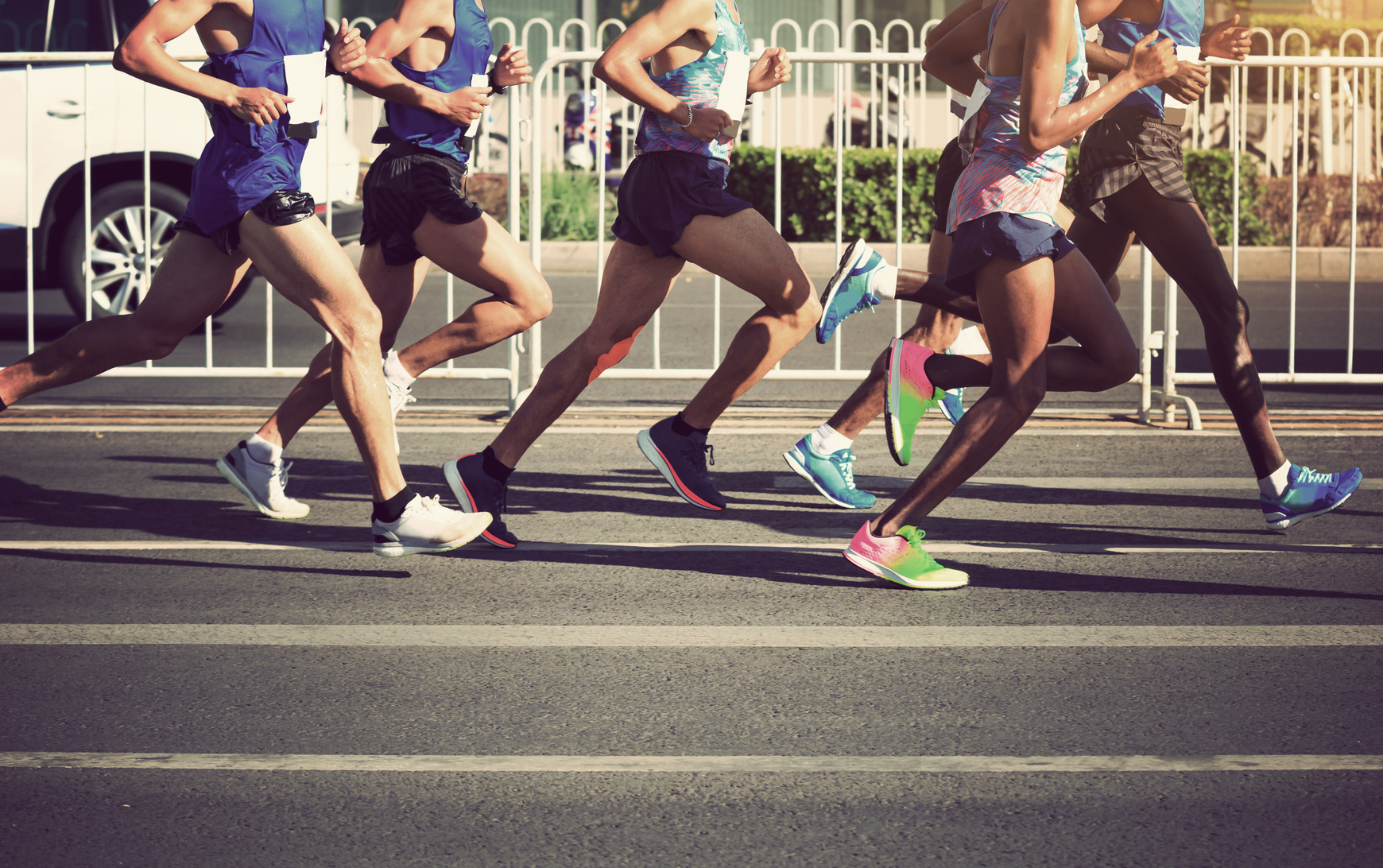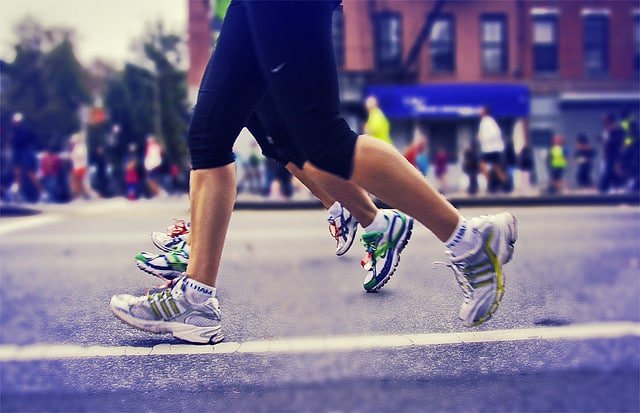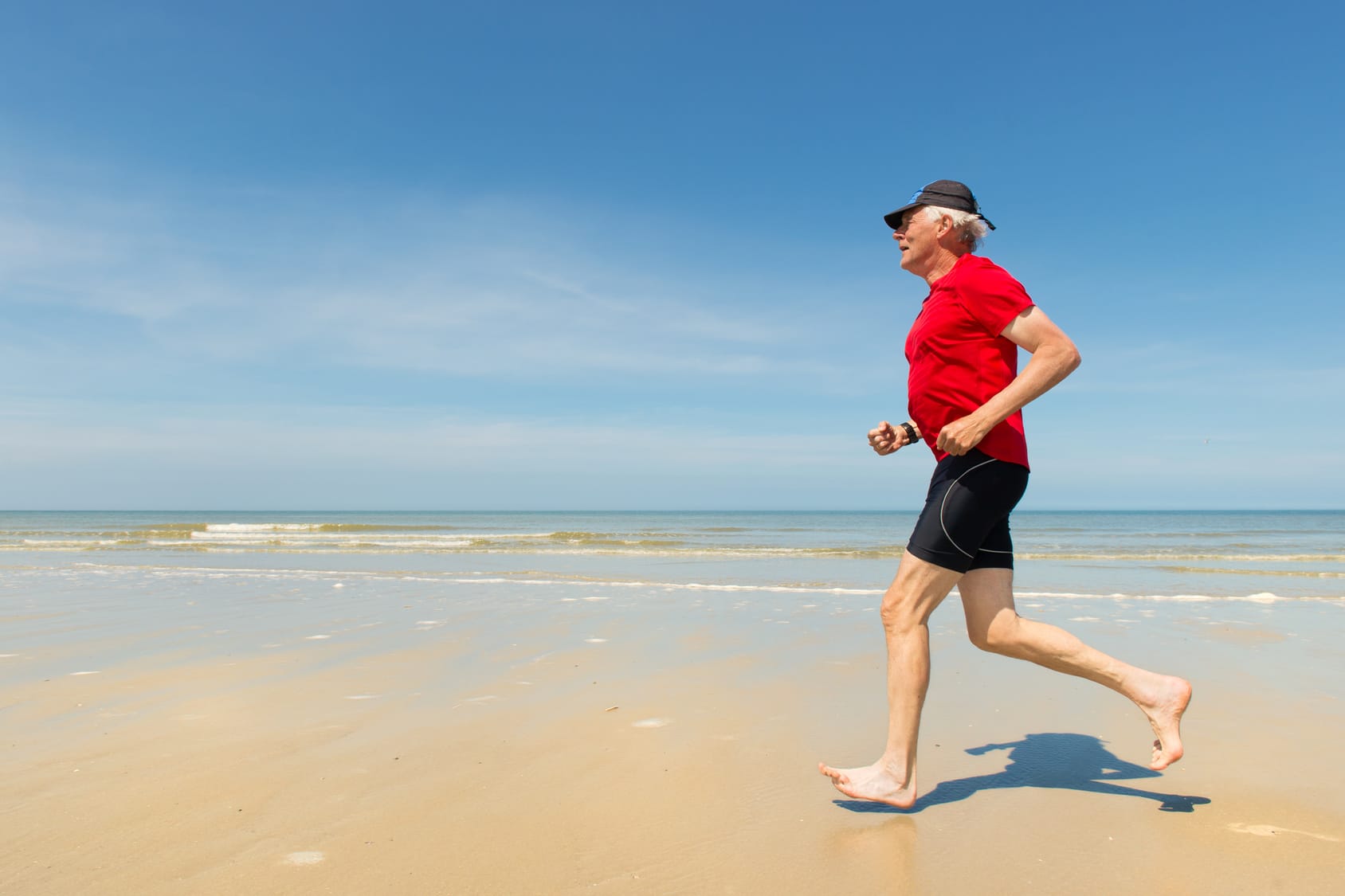For those seeking the ultimate test of endurance, the Marathon Des Sables is a race like no other. Often regarded as the toughest ultra-marathon in the world, it’s not for the faint of heart.
Imagine six grueling days of running, covering a staggering 156 miles. You’ll navigate through unforgiving dunes, scorching salt plains, and rugged hills. The catch? You must carry everything you need to survive throughout the race.
The Marathon Des Sables is legendary in the realm of extreme sports.
In this article, we’ll delve into what makes this event so remarkable and what it takes to embark on this epic journey.
If you’re ready to test your limits and embrace the adventurer within, read on to discover what conquering the Marathon Des Sables entails.
What is The Marathon Des Sables
The Marathon Des Sables, also known as the Marathon of Sands or MDS, is a renowned ultra-distance race considered one of the toughest footraces in the world. This extraordinary event takes place in the Sahara Desert of Morocco, an extremely inhospitable environment.
Here’s what makes the Marathon Des Sables so challenging:
- Distance: The race spans over 250 kilometers (approximately 155 miles) and is completed in six days. Participants face six stages of varying distances, ranging from 21 kilometers to a grueling 82 kilometers per day.
- Self-Supported: One of the distinctive features of MDS is that it’s a self-supported race. This means participants are responsible for carrying all their supplies, including food, clothing, and sleeping gear, throughout the race. There are no external race crews to assist with these essentials.
- Harsh Environment: The Sahara Desert presents a harsh and unforgiving environment. Daytime temperatures can soar up to 45 degrees Celsius (113 degrees Fahrenheit), while nighttime temperatures drop to below 10 degrees Celsius (50 degrees Fahrenheit).
- Varied Terrain: Runners navigate through a challenging terrain that includes rocky plains and massive sand dunes. The shifting sands and challenging landscapes make each day’s run a unique test of endurance.
- Ultramarathon Format: MDS is an ultramarathon event, which means participants are required to cover distances that far exceed those of a traditional marathon.
- Multi-Day Race: The race is not a one-day event but a multi-day endeavor with six consecutive racing days and a rest day. This extended format adds to the physical and mental demands placed on participants.
Despite these extreme challenges, the Marathon Des Sables attracts runners and walkers from around the world who are drawn to the ultimate test of human endurance in one of the world’s most iconic deserts.
Additional resource – Marathon pace chart
The Difficulties of Running The Marathon of Sands
Running the Marathon Des Sables is an incredibly demanding feat, and participants face a multitude of difficulties during this extreme race:
- Elevation Changes: The race route includes near-vertical rocky ascents with over 1,000 meters of elevation gain. These steep climbs are physically demanding and require a great deal of endurance.
- Physical Toll: The grueling conditions take a toll on participants’ bodies. Feet can blister, swell, crack, and bleed as runners log miles in the harsh desert environment. This physical strain can lead to a high rate of injuries and discomfort.
- High Dropout Rate: Due to the extreme nature of the race, it’s not uncommon for a significant percentage of participants, around 30 to 40 percent, to drop out before reaching the finish line. The Marathon Des Sables is known for being a challenging race that tests the limits of endurance.
- Wildlife: The Sahara Desert is home to various wildlife, including over 20 species of snakes and ten scorpions, some of which are venomous. While these creatures tend to be more active at night, participants must still be cautious.
Additional Reading – Here’s your guide to obstacle race course training.
The Rules of Marathon Des Sables
The Marathon Des Sables (MDS) is governed by a set of rules and regulations to ensure the safety and fairness of the race.
Here are some key rules and aspects of the race:
- Race Stages: The MDS consists of six stages, with five of them being competitive stages where participants are timed. The final stage is a non-competitive charity stage meant for enjoyment.
- Self-Sufficiency: One of the defining features of the MDS is self-sufficiency. Participants are required to carry everything they need for the race on their backs, except the water provided by the race organizers. This includes their own gear, food, camping materials, and survival tools.
- Navigation: Runners must navigate the course using the provided maps and checkpoints. GPS devices and external assistance are not allowed.
- Safety Equipment: Participants are required to carry safety equipment, including a distress flare, a venom pump, a compass, and a whistle.
- Medical Checkpoints: There are medical checkpoints along the course where participants’ vital signs and health conditions are monitored. If a participant is deemed medically unfit to continue, they may be withdrawn from the race.
- Environmental Respect: Runners must respect the environment and follow Leave No Trace principles. Any littering or damage to the desert environment is strictly prohibited.
- Camp Regulations: Participants are expected to follow camp regulations, including adhering to designated camping areas and using the provided communal tents.
- Race Etiquette: Respect for fellow competitors and race officials is essential. Unsportsmanlike conduct is not tolerated.
- Drop Bags: Participants are allowed a limited number of drop bags at specified checkpoints for storing extra gear and supplies.
- Mandatory Gear: There is a list of mandatory gear items that each participant must carry, including a backpack, sleeping bag, and signaling mirror, among others.
- Disqualifications: Violating the rules or failing to meet mandatory requirements can result in time penalties or disqualification from the race.
Additional Guide – What’s The Fastest Marathon Time?
When Is The Marathon Des Sables
The Marathon Des Sables typically occurs during the first two and a half weeks of April each year, taking advantage of the springtime in the Sahara Desert.
For the 2023 event, the race is scheduled to run from April 21st to May 1st. This timing allows participants to experience the unique challenges of the desert environment while avoiding the extreme heat of the summer months.
What to Carry
Participants in the Marathon Des Sables are required to carry a backpack weighing around 14 to 36 pounds, and this weight includes their food (excluding water). The day before the race, the backpacks are checked for the necessary supplies, which include:
- Backpack
- Lighter
- Topical disinfectant
- Sleeping bag
- Ten safety pins
- Whistle
- Signaling mirror
- Head torch and a complete set of spare batteries
- Anti-venom pump
- 200 euros (currency)
- One tube of sun cream
- Compass, with 1° or 2° precision
- Knife with a metal blade
- One aluminum survival sheet
- Identity card
- An original medical certificate signed by a doctor
- Original ECG and its tracing
- Passport or ID card
- Survival blanket
These items are essential for the participants’ safety and well-being during the challenging race through the Sahara Desert.
How Does The Marathon Des Sables Work?
The Marathon Des Sables is a challenging race that spans six stages over seven days, covering a total distance of approximately 156 miles or 250 kilometers.
Here’s how the event works:
- Race Course: The exact race course is kept secret until a few weeks before the event. It changes each year, so participants do not know the terrain they will face in advance.
- Stage Distances: For the first three days of the race, participants run the distance of a marathon each day, which is approximately 26.2 miles (42 kilometers) per day. These are competitive stages.
- Long Stage: On day four, there is a “long stage” where participants cover a longer distance, roughly equivalent to a double marathon.
- Rest Day: Day five serves as a rest day, providing participants with an opportunity to recover.
- Final Stage: The race concludes with a final stage on day six, marking the end of the event.
- Course Markings: The race course is marked with indicators approximately every 500 meters, ensuring that participants stay on course
- Checkpoints: Checkpoints are strategically placed along the course, typically every five to nine miles. At these checkpoints, participants can check in, undergo medical checks, refill their water supplies, and dispose of trash.
- Tent Accommodations: Participants stay in shared tents at designated campsites along the route. Each tent accommodates a group of runners.
Additional Resource – Here’s your guide to hydration running vests
How Long Does It Take to Run The Marathon Des Sables
The time it takes to complete the Marathon Des Sables varies significantly among participants due to factors such as terrain, weather conditions, and individual fitness levels.
Here are some approximate time frames based on official statistics:
- Fastest Runners: The fastest runners in the race can complete the entire Marathon Des Sables in approximately 18 hours for men and around 24 hours for women.
- Average Pace: On average, participants who are running competitively may complete the race with an average pace of around 7 minutes per mile.
- Slower Paces: Slower participants or those who choose to walk parts of the course may take much longer, possibly more than 20 minutes per mile on average.
It’s important to note that these times are rough estimates, and individual performances can vary widely. The challenging conditions of the Sahara Desert make the race a true test of endurance, and many participants prioritize completing the race over achieving a specific time goal.
Additional resource – Here’s how to avoid a DNF in a race
How To Enter The Marathon Des Sables
Entering the Marathon Des Sables is a significant commitment, not only in terms of physical preparation but also financially.
Here are the steps to enter the race:
- Registration: Visit the official Marathon Des Sables website and look for registration details. Registration typically opens well in advance of the race, so plan ahead.
- Entry Fee: Be prepared to pay a substantial entry fee, which can vary from year to year but is generally quite high. As of the previous year, the cost was around 4,000 USD per person. This fee covers some aspects of the race, such as logistics and support.
- Travel: While the fee may include travel from Europe to Morocco, it does not cover trans-Atlantic flights for participants from outside Europe. You will need to arrange and pay for your own flights to Europe and then to Morocco.
- Required Kit: Participants are required to have specific gear and equipment for the race, including a sleeping bag, shoes, gaiters, stove, and more. This gear can add up to an additional cost of around 6,000 USD.
- Training: Prepare yourself physically and mentally for the challenges of the race. Training for a multi-day ultramarathon in a desert environment is essential for your safety and success.
- Visa and Travel Documents: Ensure you have the necessary travel documents, including a passport and any required visas for travel to Morocco.
- Health and Medical Check: Complete any required medical checks and provide the necessary health documentation, including an original medical certificate signed by a doctor.
- Logistics: Pay close attention to logistics and transportation details provided by the race organizers. Understand the race schedule and requirements for self-sufficiency during the event.
- Safety and Preparation: Prioritize safety and adequate preparation. Familiarize yourself with the race rules, safety protocols, and desert survival techniques.
- Fundraising: Some participants choose to fundraise for charity as part of their Marathon Des Sables experience. If you plan to do this, consider setting up a fundraising campaign.
Additional Resource – How Many Calories Should a Runner Eat
How to Sign Up
Signing up for the Marathon Des Sables involves the following steps:
Visit the Official Website: Go to the official Marathon Des Sables website that corresponds to your country of origin. The specific websites mentioned are:
For US and international residents: marathondessables.com
For UK residents: marathondessables.co.uk
Review Rules and Requirements: Thoroughly review the rules, requirements, and eligibility criteria for participating in the Marathon Des Sables. Ensure you meet all the prerequisites before proceeding with registration.
Complete Registration Forms: Fill out all the required registration forms and provide accurate information. These forms may include personal details, medical information, emergency contact information, and payment details.
Payment: Be prepared to make the necessary payment for your registration. Keep in mind that the entry fee for the Marathon Des Sables can be substantial, so ensure you have the required funds available.
Medical Certification: You will likely need to provide an original ECG (electrocardiogram) and a medical certificate signed by a doctor confirming your fitness to participate in the event.
Insurance: Consider obtaining insurance that covers potential cancellation due to injury or illness before the race. This can protect your financial investment.
Payment Deadlines: Adhere to all payment deadlines and requirements specified by the race organizers. Failure to meet these deadlines may result in forfeiting your spot.
Chronic Conditions: If you have any chronic medical conditions, be prepared to provide any necessary documentation, such as a sealed letter addressed to the Medical Director.
Submit Your Application: Once you have completed all the required forms, documentation, and payments, submit your application for review.
More Rules
Certainly, here are some of the additional rules and requirements that participants in the Marathon Des Sables (MDS) must adhere to:
- Acceptance of Race Rules: Participants must acknowledge and accept the rules and regulations that govern the Marathon Des Sables. These rules cover various aspects of the race, including safety, behavior, and logistics.
- Payment Deadlines: Participants are expected to meet payment deadlines specified by the race organizers. Failing to meet these deadlines may result in disqualification or forfeiture of the entry fee.
- Completion of Required Forms: Participants must complete all necessary registration and waiver forms. These forms typically include personal information, medical history, emergency contact details, and acceptance of liability.
- Cancellation Insurance: Participants are encouraged to take out insurance that covers the possibility of cancellation due to injury or illness before the race. This insurance can provide financial protection in case a participant is unable to compete.












